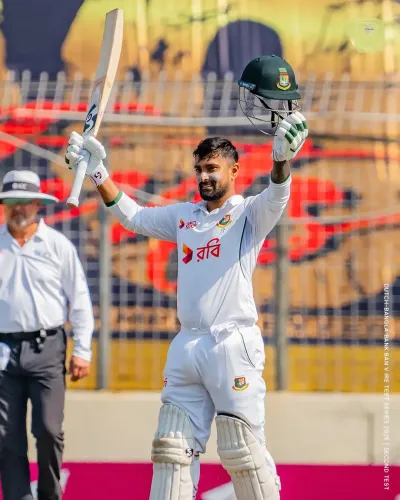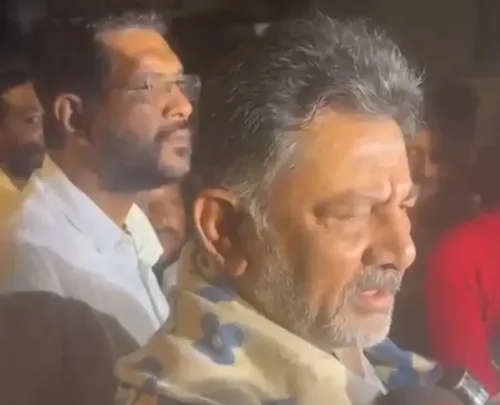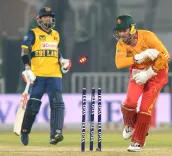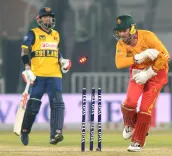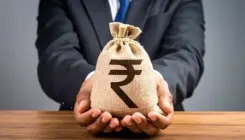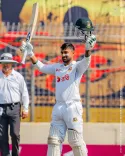Will South Korea's Defence Industry Sustain Export Growth Amid Global Tensions?

Synopsis
Key Takeaways
- Strong export momentum amid geopolitical uncertainties.
- Increased demand for deterrent capabilities.
- South Korea ranked 10th in global arms exports.
- Successful US$6.5 billion deal with Poland for K2 tanks.
- Future growth expected in the defence industry.
Seoul, Aug 19 (NationPress) South Korea's defence sector is anticipated to maintain robust export levels for the foreseeable future, as industry experts indicated on Tuesday. This trend is attributed to ongoing geopolitical uncertainties and a rising demand for deterrent capabilities, particularly in light of the ongoing Russia-Ukraine conflict and escalating tensions across Asia.
This optimistic forecast persists despite international efforts aimed at resolving the Ukraine crisis.
“In my opinion, even if a cease-fire or peace deal is reached, I don't foresee a significant reduction in arms development across Europe,” stated an anonymous official from a prominent South Korean defence company in an interview with Yonhap News Agency. “While we do not engage in exports to Ukraine or Russia, we are closely observing the situation.”
Another official from a different defence firm echoed this sentiment, emphasizing the importance of monitoring the evolving global security landscape.
“We need to assess the changing geopolitical dynamics. From a business perspective, we aim to closely observe these transformations and seize new opportunities,” the unnamed official remarked.
The same official further noted that their company is actively seeking partnerships with leading European defence manufacturers.
A distinct industry source from another organization mentioned that the global demand for advanced weaponry could even increase.
“I believe that the global defence market will expand significantly, potentially providing valuable opportunities for the South Korean defence industry,” the official mentioned.
She pointed out that the Ukraine conflict has prompted nations to “acknowledge the critical importance of safeguarding their own security.”
“I anticipate that governments will bolster research and development in areas crucial for preparing for future combat scenarios, particularly those involving unmanned and automated warfare,” she added.
In recent years, South Korea has rapidly increased its presence in the global defence market, driven by geopolitical tensions stemming from the intensifying rivalry between the United States and China, as well as security instability in Europe and the Middle East.
Data from the Stockholm International Peace Research Institute ranks South Korea as the 10th largest arms exporter globally between 2020 and 2024.
Earlier this month, South Korea successfully secured a US$6.5 billion contract with Poland, marking the export of a second batch of K2 tanks from Hyundai Rotem Co., which is the largest contract ever awarded to a South Korean defence contractor.
During his election campaign, President Lee Jae Myung promised to develop defence exports as a key economic driver, vowing to elevate South Korea to one of the world's top four defence powers during his presidential tenure.
Ahn Sang-nam, the head of the defence industry promotion division at the Korea Defence Industry Association (KDIA), remarked that the sense of insecurity in Europe would likely persist even if the conflict in Ukraine lessens.
“In my view, it won’t have a significant immediate impact on South Korean defence exports. Russia remains a threat not only to Ukraine but to the Baltic region as a whole, and there is an increasing belief that each nation must take responsibility for its own security,” he stated.
“Our weapon systems are particularly well-suited for regions that require them, so I am confident that South Korea's defence exports will continue to grow for the time being,” he added.
This positive outlook is further supported by impressive financial results in the sector. According to industry reports, the combined operating profit of the five largest defence firms in the country—Hanwha Aerospace Co., LIG Nex1 Co., Korea Aerospace Industries Co., Hanwha Systems Co., and Hyundai Rotem—surged by 161 percent year-on-year to 2.34 trillion won (US$1.69 billion) in the first half of this year, achieving 80 percent of their projected annual earnings for 2024.



